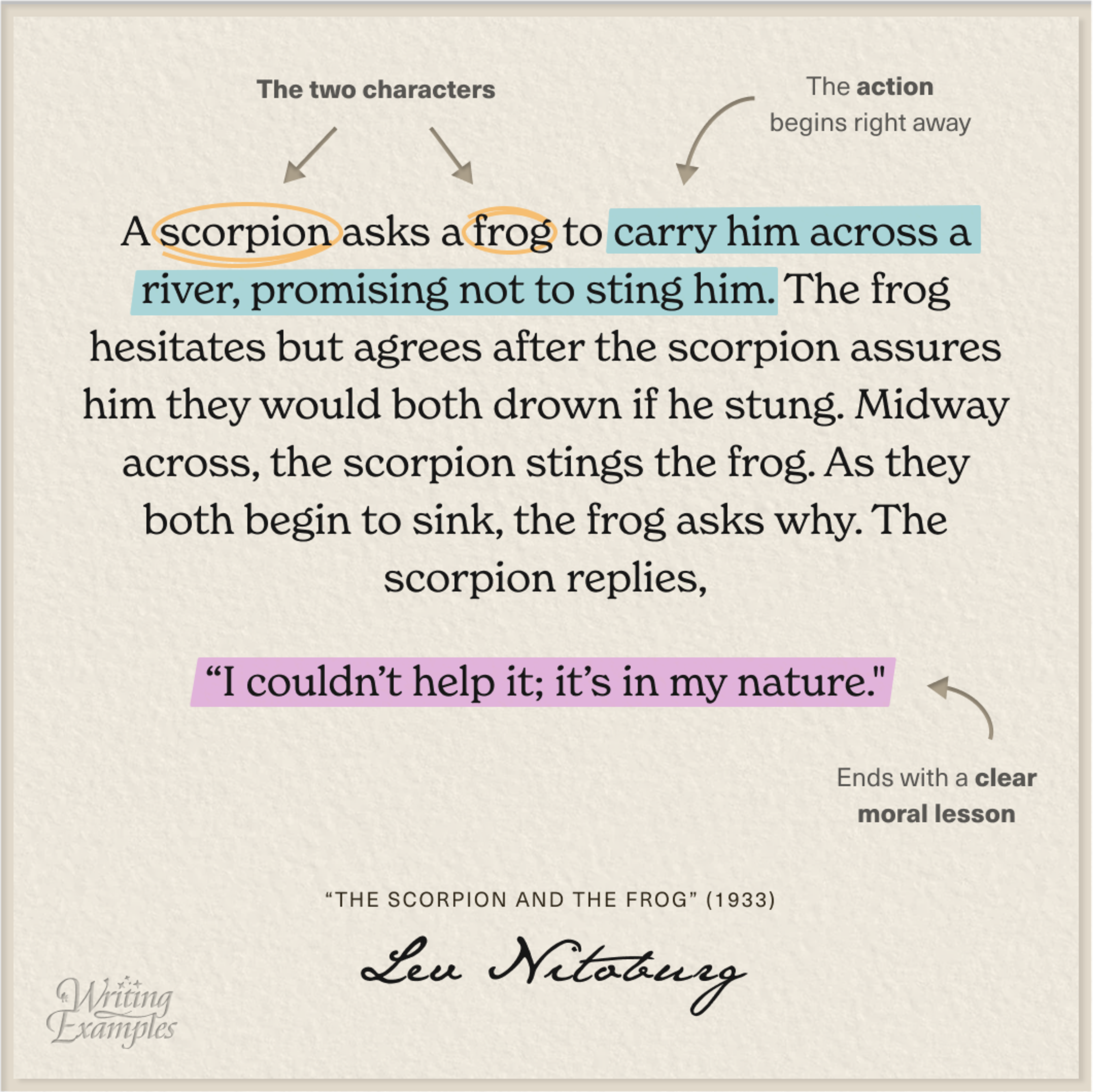HOW TO
Write aFable
By
David Perell


ables are like memes for the ear. They spread so easily because they’re so easy to remember. And they compress a lot of information into a small surface area. That's why fables like “The Scorpion and the Frog” have reverberated through the centuries.
The Fable of the Scorpion and the Frog works because the context is established at the outset, the story moves quickly, and there’s a clear moral at the end.
- There are only two characters: the scorpion and the frog.
A fable isn't a place to go crazy with your story. You're not Christopher Nolan. Give the reader something simple and easy to follow. Every unit of complexity will obscure the moral of your story (and limit how well it spreads too).
The characters are fun, too. Like in cartoons, fables bring human characteristics to plants and animals. This one works because people tend to be scared by scorpions, which immediately positions it as a potential threat.
The animals in fables should clearly symbolize a trait. The Tortoise and the Hare works because it’s slow vs. fast and leads you to the main takeaway: “slow and steady wins the race.” It wouldn’t work if the hare were racing a cheetah. - The story moves quickly.
If a fable is going to stick, it can’t have a long backstory. In this one, it takes two sentences to set the context.
As soon as you understand the context, the action kicks right in. There’s a quick turn of events: the scorpion stings the frog. And the moral lesson comes right after.
Every politician knows that only short taglines can cut through the noise, and so it is with fables: they require ultimate compression. - Stories are more memorable (even if they’re longer).
We're taught to write in ways that are direct and to-the-point, but fables ignore that heuristic in favor of a narrative — and the result is something far more memorable.
You should be able to remember a fable well enough to recite it to a friend after just one listen.
This fable wraps a clear moral lesson inside a story. The following sentence is a shorter and more direct way to communicate the moral of the Scorpion and the Frog story: “People will act according to their true nature, even if it harms them.” Even if that sentence is true, it would read like a cliché without the fable to give it life.
Fables are fun to write because you can make them up and they’re effective because they can so easily be tweaked and remixed depending on the context. On something like a legal document, small changes can change the meaning entirely, but small changes can actually enhance a fable, which is why they consistently survive our cultural game of telephone.
Use a fable whenever you want to add life to a moral lesson.
Read More
Write like the Greats
New Writing Examples, right in your inbox.
“Beautiful, playful, and high-quality. Kudos.”
Clayton
from Missouri, USA



